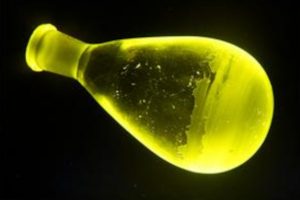
This kind of transistor has a channel made from the 2D material graphene, which has high electron mobility that can be modulated in various ways.
The channel’s sensitivity to being gated by outside influences has led GFETs, as they are known, to be used in various types of sensor.
To make an electronic nose, a chemical receptor for the molecule-to-be-sensed needs to be bonded to the graphene channel, which is what Tokyo Tech is doing.
What sets this project apart, is that the team designed a set of peptides to both attach to molecules-of-interest, and to be GFET-friendly.
“The sequence of peptides we designed needed to perform two main functions: acting as a biomolecular scaffold for self-assembly on a graphene surface, and to functioning as a bio-probe to bind the odour molecules,” said team leader Professor Yuhei Hayamizu. “This would allow the peptides to cover the graphene surface in a self-assembling manner, and functionalise the surface uniformly to capture odour molecules.”
Using atomic force microscopy, they confirmed that their peptides did indeed cover the graphene surface, with a thin uniformly layer.
Three peptides were designed, to detect limonene, menthol or methyl salicylate, and the conductivity of the graphite reduced as these molecules arrived at the custom receptors.
“The interaction between the three peptide sequences and the odour molecule gave rise to very distinct signatures,” said the university. “Observations indicated that the time constraint associated with the adsorption and desorption of odour molecules was unique for each of the peptide sequences.”
“Our approach is simple and can be scaled up for mass production of peptide-based olfactory receptors that can mimic and miniaturise the natural protein receptors responsible for our sense of smell,” said Hayamizu.
Tokyo Institute of Technology worked with Toshiba.
The work is described in ‘Designable peptides on graphene field-effect transistors for selective detection of odor molecules‘, published in the journal Biosensors and Bioelectronics.
 Electronics Weekly Electronics Design & Components Tech News
Electronics Weekly Electronics Design & Components Tech News



